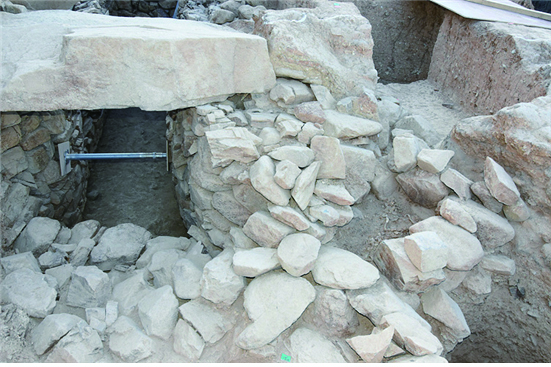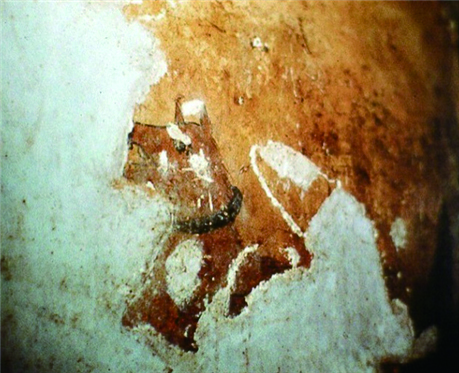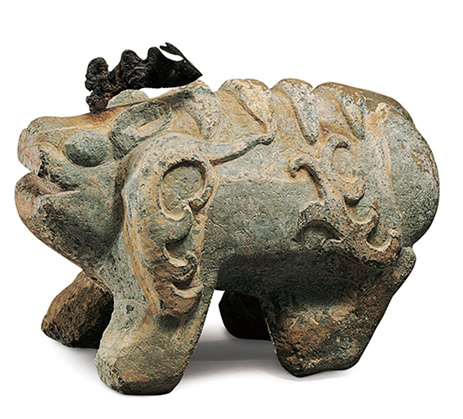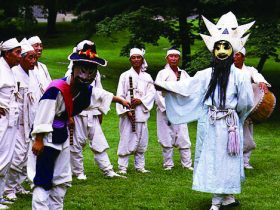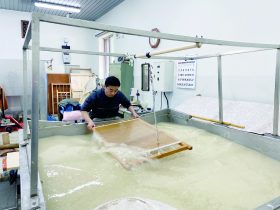Gaya National Research Institute of Cultural Heritage
KIM Bosang


Dogs are the first animals to be domesticated by humans, living with humans assisting hunt, shepherding sheep, guarding and as a pet. The excavation campaigns of the Gyo-dong and Songhyeon-dong Tumuli in Changnyeong yielded skeletal remains of dogs which date to the Gaya period.
The dog bones were discovered while removing small stones in front of the Tomb No. 63. At first, it was difficult to identify what animal it was and how many of them were buried as the inside was filled with soil. As the dirt was brushed off carefully for a long time, it was revealed that it was a dog-like animal with the skeletal remains relatively intact. There was a room for the animals and the animals were laid facing the outside of the tomb. Investigators have found that the animals were dogs. The animals were not placed between stones as offerings, but three dogs laid down in a complete form in a small room near the tomb occupant suggested it was an example of Sunjang, or sacrificial burial burying the living with the dead, a custom of the Three Kingdoms period.
Excavation of Tomb No. 39, which is 27.5-meter-long, also confirmed a small space near the entrance with parts of animal bones. As an investigator, the animal bones are expected to be those of dogs, similar to Tomb No. 63, but cannot guarantee since it was impossible to estimate the whole skeletal system. The two tombs touched each other, which suggests that the owners of the tombs are relatives. Both tombs added a small stone-lined chamber near the owner on northwest of the entrance and buried animals there. What was the duty of the dogs buried in the Tombs No. 39 and 63?
The recent excavation of the site unveiled new things that are not found in different tombs of the same era with little known. We are examining what we have found after returning to the institute. Burying dogs at in a separate room near the entrance of a tomb seems different from the animals had been discovered at the other tombs of the Three Kingdoms period. The dogs might have played the role of Jinmyosu (tomb guardian animal) like the dog appearing in the mural of the Gakjeochong (the Tomb of Wrestlers) from Koguryeo or a stone guardian from the Tomb of King Muryeong in Baekje.
Nowadays, we often see people walking with their dogs, reflecting that dogs are great companions of humans. The dogs stand by their owners whether alive or dead.
